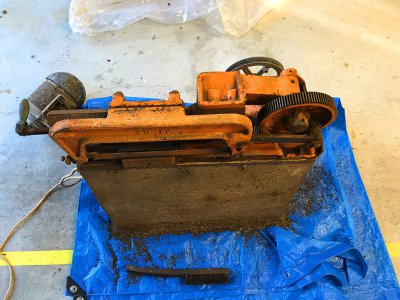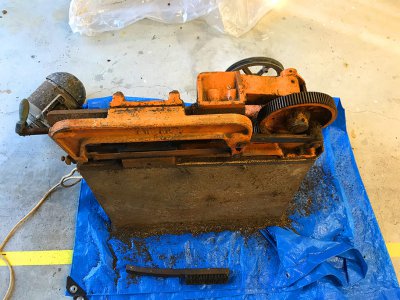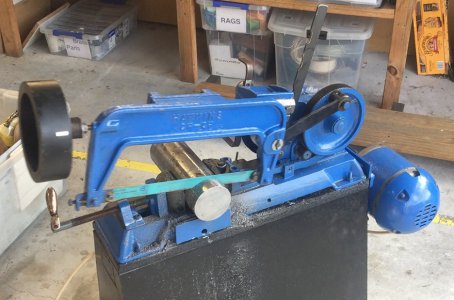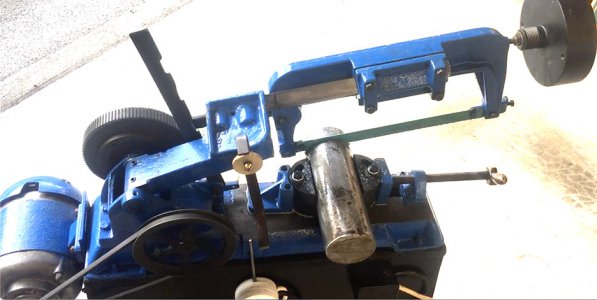- Joined
- Nov 21, 2021
- Messages
- 36

I mentioned to an engineering friend that I was going to the "Men's Shed" to use their electric hacksaw. He said he has one that he never uses because he orders all his stock cut to length. Is he gave it to me. The thick layer of dirt was testament to the fact that it had not been used for decades. I didn't take a photo until after cleaning the thickest layers of dirt. I tried to buy some orange epoxy paint but could not get anywhere near the right colour. So I used the Epoxy Ultra-Blue that I had used to paint my Boxford lathe and drill stand. So now they all match.


Here it is cutting the 80mm diameter stainless steel bar that I used to make the ball turning attachment that I posted today. Apparently in South Africa they call this a "Strongarm".
Cast into the arm is "HAWKINS CH-CH". The abbreviation CH-CH is for Christchurch in New Zealand. I did some research and found that Hawkins Foundry in Christchurch was advertising this kind of equipment from 1932 to 1946. He was the maker of postage franking machines and NZ was one of the first countries in the world to use the system starting in 1905.
In the last photo, at the bottom you can see a white pill box. It contains a microswitch. the bar through the middle is spring loaded to push up. There is a larger sleeve on the shaft that turns the switch off then the blade gets to the bottom.
Originally this had some kind of lifter mechanism to raise the blade on the backstroke. It would have been hydraulic, but it is missing and I have not yet made a replacement. It also needs a guard on the belt and moving parts.



